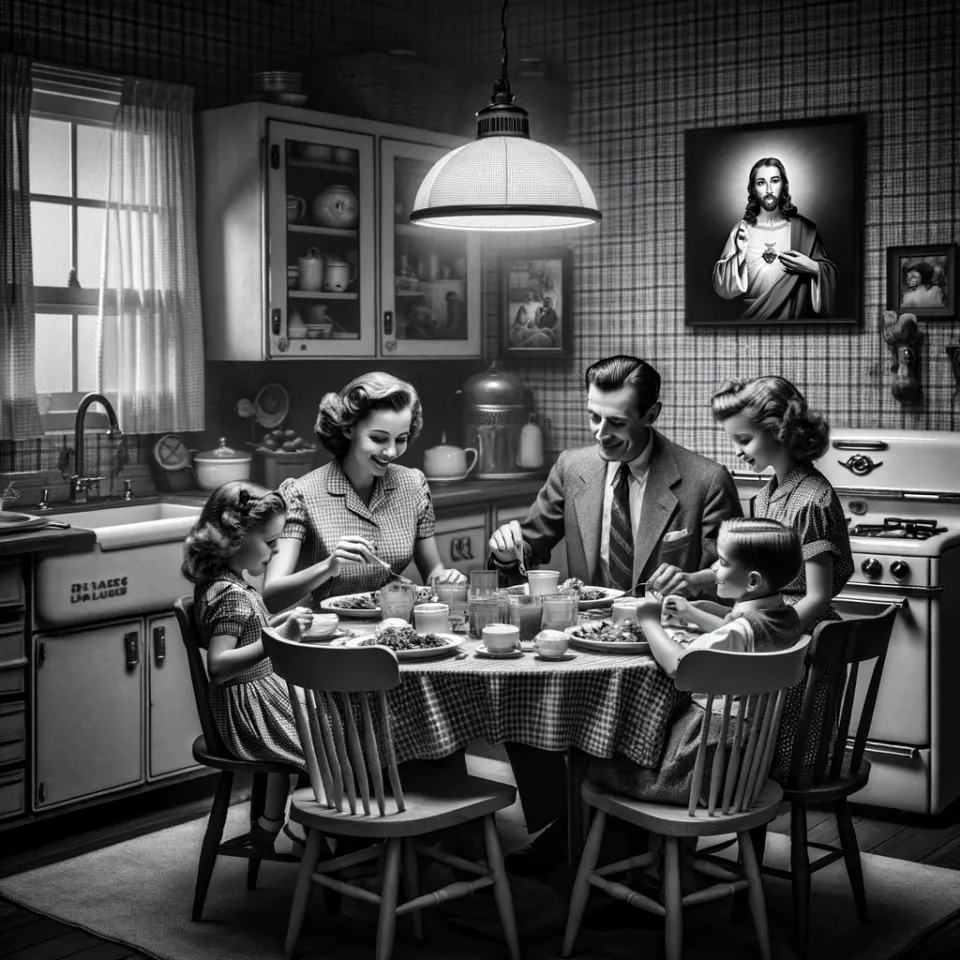The rise of the nuclear family

I recently became a dad and started to wonder how taking-care-of responsibilities are shared across adults. It used to be the case that households were bigger and there was always somebody around to look after the children. Grandparents lived in the same house, there were brothers, sisters, nephews. Families were bigger, and tightly connected in everyday live.
The nuclear family is the opposite of that: smaller households where the mom and dad are the most important care-givers of the children. Parents and children live in the same home. Other family members could be living nearby if you're lucky, but could also be on the other side of the country.
This has consequences - it puts an outsized responsibility on the parent's shoulders when compared to non-Western cultures and the way we used to organize things historically. Why are average household sizes shrinking over time?
Factors like urbanization, capitalism, industrialization surely play a role. As families have more money to spend, housing and privacy become more affordable and people start living on their own.
Is it that we think we don't need family and friends anymore to help us with day to day things? Or is individualism valued so highly that we do whatever we can to not sacrifice our time and effort for the group? It is more about my life, my career, my achievements, much less about how we as a family or community thrive.
There are many factors that contribute to smaller households. Could the Catholic Church have a role as well? Over time, the Church has imposed new laws regarding marriage. In the old days arranged marriages had a purpose: preserving wealth, power and relationships in a tight knit family. By allowing the parents to chose whom their children would get married to, it was easier to keep everything under control. The individual people being married didn't have much to say in this, as the prosperity of the family was more important.
The Church wanted to have more control over marriages, so over time they introduced strict laws.
- Marriage as a Sacrament (1215)
- Mutual consent (around 12th century)
- Affinity (1215)
- Secret Marriages (1563)
- Various impediments (1917)
- Annulment Criteria (1917)
- Prohibition of Divorce
- Prohibition of Contraception (1930)
- Interfaith Marriage Regulations (1917)
This put control over family structures for a significant part outside the family, and into the hands of the Church. Not allowing certain kinds of marriages with closer relatives, also widened the relationships people could and should have to more distant families. With more rules to abide by, some marriages could be delayed or even prevented, particularly in smaller communities.
The rule of Affinity said that it was not allowed to marry any 'blood relatives'. This was driven far back up the ancestral tree, so marrying someone with a common great-great-great-great-great-grandfather was not allowed.
In case your partner died, remarrying someone close in his/her family is generally prohibited. This could lead to more single-parent households or households without children, reducing the average household size.
Overal the size of households is determined by many different factors, but the Church likely had a significant influence in how families were and are connected by controlling the marriage process. By imposing more rules on marriage, power shifted from big multi-generational families to the Church and to a lesser extend the 'individual'.